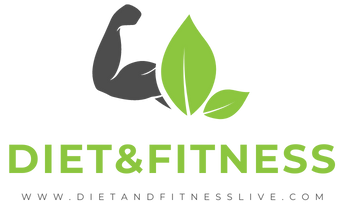
The ketogenic diet: A comprehensive guide to weight loss and health improvement
The ketogenic diet, or keto diet, has become increasingly popular over the years as a way to lose weight and improve overall health. This low-carb, high-fat diet has been proven to help people shed unwanted pounds, reduce inflammation, and even improve cognitive function. In this article, we will explore the ins and outs of the ketogenic diet and provide you with all the information you need to get started.
- What is the ketogenic diet?
- How does the ketogenic diet work?
- What are the benefits of the ketogenic diet?
- How to get started with the ketogenic diet
- Foods to eat on the ketogenic diet
- – Healthy fats, such as avocados, nuts, seeds, and fatty fish
- – Protein sources, such as grass-fed beef, chicken, and eggs
- – Non-starchy vegetables, such as leafy greens, broccoli, and cauliflower
- Foods to avoid on the ketogenic diet
- To get into ketosis, you will need to avoid certain foods, including:
- – Sugary foods, such as candy, soda, and baked goods
- – Grains, such as bread, pasta, and rice
- – Starchy vegetables, such as potatoes and corn
- – High-carb fruits, such as bananas and grapes
- Ketogenic diet and exercise
What is the ketogenic diet?
The ketogenic diet is a low-carb, high-fat diet that forces your body to burn fat for fuel instead of carbohydrates. When you eat a diet high in carbohydrates, your body uses glucose as its primary source of energy. However, when you restrict carbohydrates, your body enters a state of ketosis, where it begins to burn fat for fuel instead. This process leads to weight loss and a host of other health benefits.
How does the ketogenic diet work?
The ketogenic diet works by reducing your intake of carbohydrates and increasing your intake of healthy fats. When you eat a diet high in carbohydrates, your body releases insulin to help regulate your blood sugar levels. This insulin response can lead to weight gain, inflammation, and other health issues. However, when you restrict carbohydrates, your body produces less insulin, which can lead to weight loss and improved health.
What are the benefits of the ketogenic diet?
The ketogenic diet has been shown to have a number of benefits, including weight loss, improved blood sugar control, reduced inflammation, and improved cognitive function. It has also been shown to help reduce the risk of certain diseases, including type 2 diabetes, heart disease, and cancer.
How to get started with the ketogenic diet
Getting started with the ketogenic diet can be daunting, but it doesn’t have to be. Here are some tips to help you get started:
- Calculate your macronutrient needs – To get into ketosis, you will need to eat a diet that is high in fat, moderate in protein, and low in carbohydrates. Use an online calculator to determine your daily macronutrient needs.
- Plan your meals – Meal planning is key to success on the ketogenic diet. Plan your meals in advance so that you always have healthy, keto-friendly options on hand.
- Stock up on healthy fats – The ketogenic diet requires a high intake of healthy fats, such as avocados, nuts, seeds, and fatty fish.
- Limit your carbohydrate intake – To get into ketosis, you will need to limit your carbohydrate intake to less than 50 grams per day.
- Be patient – It can take a few days to a week to get into ketosis, so be patient and stick with it.
Foods to eat on the ketogenic diet
The ketogenic diet is a high-fat, low-carb diet that focuses on healthy fats, protein, and non-starchy vegetables. Here are some foods to include in your diet:
– Healthy fats, such as avocados, nuts, seeds, and fatty fish
– Protein sources, such as grass-fed beef, chicken, and eggs
– Non-starchy vegetables, such as leafy greens, broccoli, and cauliflower
Foods to avoid on the ketogenic diet
To get into ketosis, you will need to avoid certain foods, including:
– Sugary foods, such as candy, soda, and baked goods
– Grains, such as bread, pasta, and rice
– Starchy vegetables, such as potatoes and corn
– High-carb fruits, such as bananas and grapes
Ketogenic diet and exercise
Exercise is an important part of any weight loss plan, including the ketogenic diet. However, it’s important to keep in mind that when you first start the ketogenic diet, you may experience some fatigue and weakness. It’s important to listen to your body and take it easy during this time. Once you are fully adapted to the diet, you can begin to incorporate exercise into your routine.
In conclusion, the ketogenic diet is a powerful tool for weight loss and improved health. By reducing your intake of carbohydrates and increasing your intake of healthy fats, you can enter a state of ketosis and begin to burn fat for fuel. With a little patience and planning, you can successfully transition to the ketogenic diet and start reaping the many benefits it has to offer.






